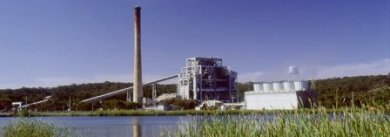By NOEL MURPHY
POTENTIAL buyers of Alcoa’s Anglesea power plant should be aware its “appalling level of emissions” were recognised at the “highest level” of EPA Victoria, according to Surf Coast Air Action.
In yet another ramped-up claim in its campaign against the coal-fired power station, which faces closure – and the loss of more than 80 jobs – SCAA’s call on emissions is at odds with official assessments by Alcoa and the EPA.
SCAA said after recently meeting EPA boss Nial Finegan that “the EPA’s role is to be an effective environmental regulator and an influential authority on environmental impacts”.
”Potential buyers should note that Mr Finegan’s visit demonstrates that at the highest level EPA Victoria is aware of the Anglesea community’s very serious concerns about the appalling levels of emissions released by Alcoa.”
Alcoa, however, refused to acknowledge any “appalling level of emissions”, stressing it would “continue to meet with a range of stakeholders, including community members, to discuss their concerns”.
The company said it welcomed a State Government public inquiry and “any potential recommendations of policies and procedures that will contribute to environmental protection”.
“It will also continue to work with Alcoa to continue to support compliance with its EPA licence,” it said.
“With any sale, if the Anglesea power station were to change owners, the licence would need to be transferred or a new licence application would need to be made.
“When the transfer or a new application happens, EPA will review the licence and its conditions. Potential buyers should seek to understand regulatory requirements through the sale process.”
Alcoa told the Independent last week that its Anglesea Human Health Risk Assessment (HHRA), published in August 2013, modelled ground level concentrations for arsenic, lead and mercury are orders of magnitude lower than the State Environmental Protection Policy (Air Quality Management) (SEPP (AQM)) design criteria.
Arsenic was less than 1.5 per cent, lead less than 0.7 per cent and mercury less than 0.3 per cent of the SEPP AQM design criteria, demonstrating negligible risk to human health, it said after SCAA posted images of a pregnant woman clutching her stomach, superimposed with the words mercury arsenic, lead and dioxin.
The EPA said Alcoa’s most recent air-monitoring results showed emissions from the power station “comply with national standards and EPA licence limits”.
“Alcoa publishes these results in its monthly environment report to the community,” it said.
Public comments by SCAA about the plant and its future have been at odds with others for some time.
In September it claimed GDF Suez, owner of the Hazelwood and Loy Yang B power plants, was considering buying the plant but industry insiders said the company was “not interested in any way, shape or form”.
Power station union rep Ben Davis has rejected claims by the SCAA that his Australian Workers Union acknowledged “the widespread concern about Alcoa’s toxic emissions”. He said he was “amazed a group could so adamant about throwing 80 people and the families on the jobless scrapheap”.
SCAA came under criticism for misleading comments about AGL Energy’s stance on the power plant when it released a media statement headlined “AGL rules out buying Anglesea power station”, claiming the company blamed “negative effects” on residents’ health and well-being for its lack of interest in the facility. Both AGL Energy and Alcoa said the release was “misleading” and “wrong”.
SCAA also claimed a human sign on Anglesea beach demanding the mine be shut down involved more than 500 people. A headcount of its photograph revealed barely 300.







